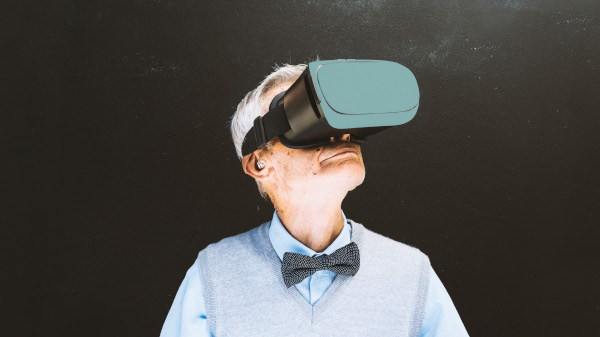
Also, some XR content expects the user to be standing and to be able to make lateral movements that a person with full mobility could make. If the user is in a wheelchair it can be difficult to make these movements and challenging to set up the system in the first place if the system doesn’t anticipate the user might be sitting.
XR platforms address accessibility to some degree, though much of the work has been aimed at people who are visually impaired. For example, Microsoft created SeeingVR, a set of tools for the Unity platform that can make virtual reality more accessible for people with low vision. Microsoft also created Canetroller, a haptic cane controller that simulates white cane interactions, enabling people with visual impairments to navigate a virtual environment by transferring their cane skills into the virtual world.
Making XR accessible to those with limited mobility sometimes could be simple. For example, a game that works with a hand controller when played on a TV screen but with body movements when played with a VR headset, might be made accessible by simply not locking out the hand controller when the headset is used.
“CTA’s AR/VR committee and its Limited Mobility Working Group aim to focus on the unique issues faced by XR system users who have limited mobility,” said Timothy Porter, chief technology officer, Mod Tech Labs and chair of the working group. “We’ll be looking at the capabilities of game engines like Unity, Unreal, and Lumberyard, and the capabilities of software development kits like Vuphoria, ARKit and Arcore. Most of these have some capabilities when it comes to accommodating people with disabilities. Our aim is to offer guidance to software developers working with these and other systems — guidance that will help them build products that keep people with limited mobility in mind.”
This working group has just started to meet. Participation is open to anyone (except media). If you’d like to join the effort, please contact Alexandra Blasgen, ablasgen@CTA.tech.

I3, the flagship magazine from the Consumer Technology Association (CTA)®, focuses on innovation in technology, policy and business as well as the entrepreneurs, industry leaders and startups that grow the consumer technology industry. Subscriptions to i3 are available free to qualified participants in the consumer electronics industry.